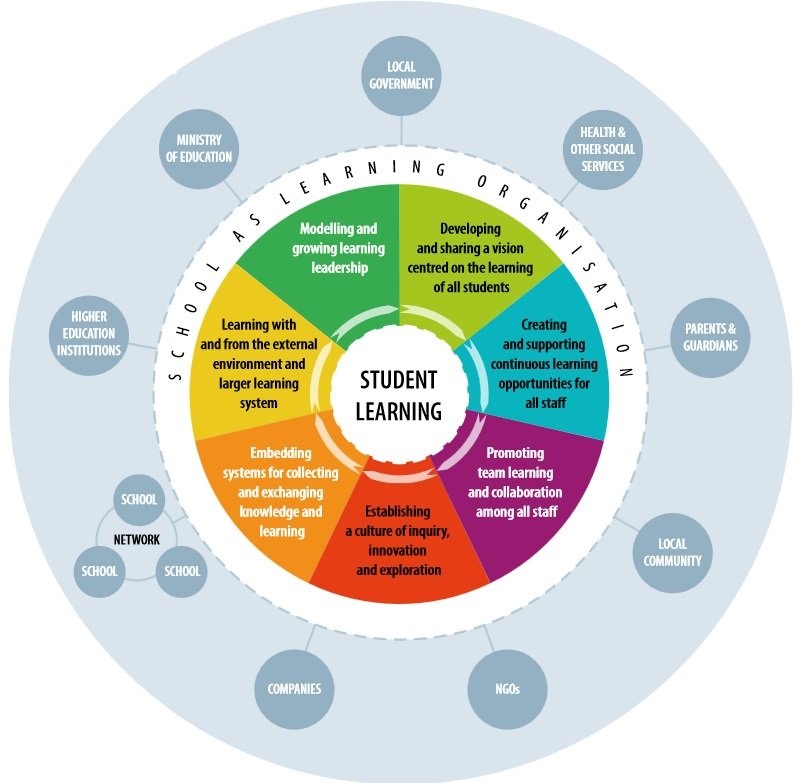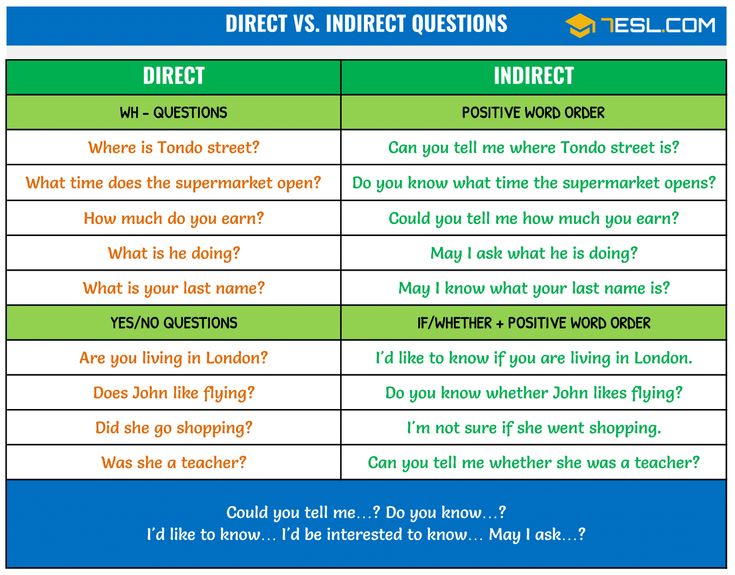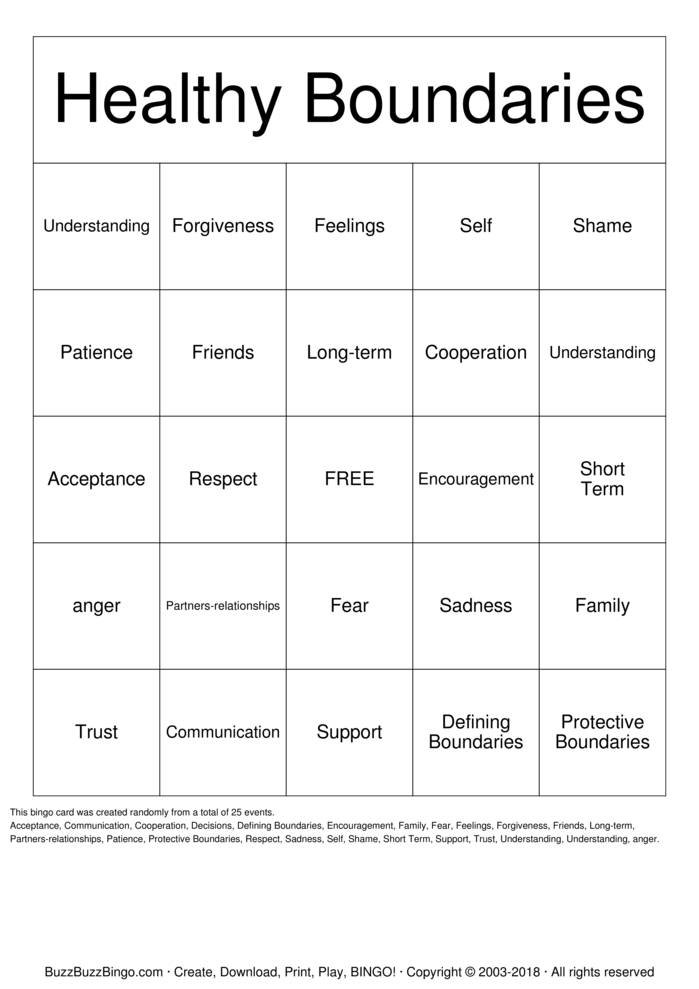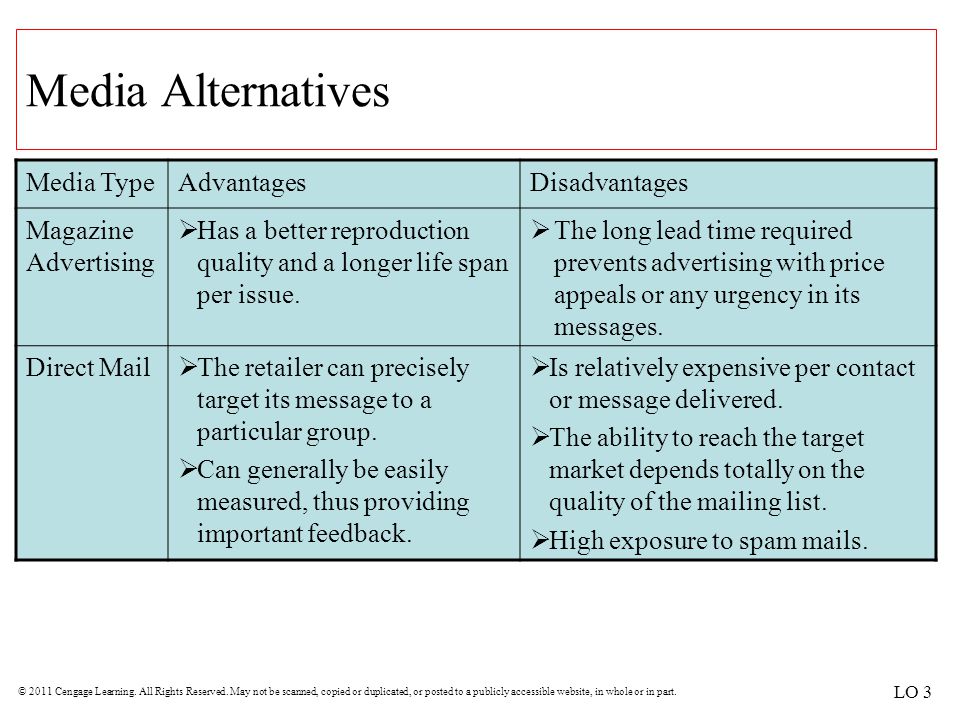Modeling social learning
6.5 Observational Learning (Modeling) – Introductory Psychology
Learning Objectives
By the end of this section, you will be able to:
- Define observational learning
- Discuss the steps in the modeling process
- Explain the prosocial and antisocial effects of observational learning
Previous sections of this chapter focused on classical and operant conditioning, which are forms of associative learning. In observational learning, we learn by watching others and then imitating, or modeling, what they do or say. The individuals performing the imitated behavior are called models. Research suggests that this imitative learning involves a specific type of neuron, called a mirror neuron (Hickock, 2010; Rizzolatti, Fadiga, Fogassi, & Gallese, 2002; Rizzolatti, Fogassi, & Gallese, 2006).
Humans and other animals are capable of observational learning. As you will see, the phrase “monkey see, monkey do” really is accurate (figure below). The same could be said about other animals. For example, in a study of social learning in chimpanzees, researchers gave juice boxes with straws to two groups of captive chimpanzees. The first group dipped the straw into the juice box, and then sucked on the small amount of juice at the end of the straw. The second group sucked through the straw directly, getting much more juice. When the first group, the “dippers,” observed the second group, “the suckers,” what do you think happened? All of the “dippers” in the first group switched to sucking through the straws directly. By simply observing the other chimps and modeling their behavior, they learned that this was a more efficient method of getting juice (Yamamoto, Humle, and Tanaka, 2013).
This spider monkey learned to drink water from a plastic bottle by seeing the behavior modeled by a human. (credit: U.S. Air Force, Senior Airman Kasey Close)
Imitation is much more obvious in humans, but is imitation really the sincerest form of flattery? Consider Claire’s experience with observational learning.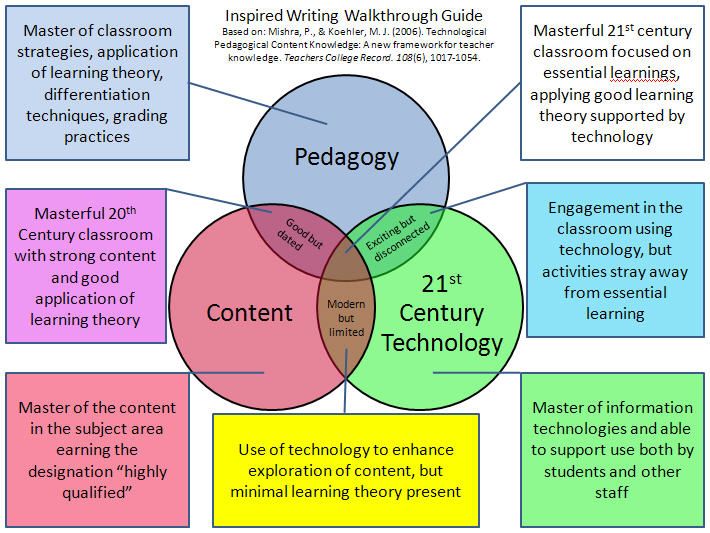 Claire’s nine-year-old son, Jay, was getting into trouble at school and was defiant at home. Claire feared that Jay would end up like her brothers, two of whom were in prison. One day, after yet another bad day at school and another negative note from the teacher, Claire, at her wit’s end, beat her son with a belt to get him to behave. Later that night, as she put her children to bed, Claire witnessed her four-year-old daughter, Anna, take a belt to her teddy bear and whip it. Claire was horrified, realizing that Anna was imitating her mother. It was then that Claire knew she wanted to discipline her children in a different manner.
Claire’s nine-year-old son, Jay, was getting into trouble at school and was defiant at home. Claire feared that Jay would end up like her brothers, two of whom were in prison. One day, after yet another bad day at school and another negative note from the teacher, Claire, at her wit’s end, beat her son with a belt to get him to behave. Later that night, as she put her children to bed, Claire witnessed her four-year-old daughter, Anna, take a belt to her teddy bear and whip it. Claire was horrified, realizing that Anna was imitating her mother. It was then that Claire knew she wanted to discipline her children in a different manner.
Like Tolman, whose experiments with rats suggested a cognitive component to learning, psychologist Albert Bandura’s ideas about learning were different from those of strict behaviorists. Bandura and other researchers proposed a brand of behaviorism called social learning theory, which took cognitive processes into account. According to Bandura, pure behaviorism could not explain why learning can take place in the absence of external reinforcement. He felt that internal mental states must also have a role in learning and that observational learning involves much more than imitation. In imitation, a person simply copies what the model does. Observational learning is much more complex. According to Lefrançois (2012) there are several ways that observational learning can occur:
He felt that internal mental states must also have a role in learning and that observational learning involves much more than imitation. In imitation, a person simply copies what the model does. Observational learning is much more complex. According to Lefrançois (2012) there are several ways that observational learning can occur:
- You learn a new response. After watching your coworker get chewed out by your boss for coming in late, you start leaving home 10 minutes earlier so that you won’t be late.
- You choose whether or not to imitate the model depending on what you saw happen to the model. Remember Julian and his father? When learning to surf, Julian might watch how his father pops up successfully on his surfboard and then attempt to do the same thing. On the other hand, Julian might learn not to touch a hot stove after watching his father get burned on a stove.
- You learn a general rule that you can apply to other situations.
Bandura identified three kinds of models: live, verbal, and symbolic. A live model demonstrates a behavior in person, as when Ben stood up on his surfboard so that Julian could see how he did it. A verbal instructional model does not perform the behavior, but instead explains or describes the behavior, as when a soccer coach tells his young players to kick the ball with the side of the foot, not with the toe. A symbolic model can be fictional characters or real people who demonstrate behaviors in books, movies, television shows, video games, or Internet sources (figure below).
A live model demonstrates a behavior in person, as when Ben stood up on his surfboard so that Julian could see how he did it. A verbal instructional model does not perform the behavior, but instead explains or describes the behavior, as when a soccer coach tells his young players to kick the ball with the side of the foot, not with the toe. A symbolic model can be fictional characters or real people who demonstrate behaviors in books, movies, television shows, video games, or Internet sources (figure below).
(a) Yoga students learn by observation as their yoga instructor demonstrates the correct stance and movement for her students (live model). (b) Models don’t have to be present for learning to occur: through symbolic modeling, this child can learn a behavior by watching someone demonstrate it on television. (credit a: modification of work by Tony Cecala; credit b: modification of work by Andrew Hyde)
STEPS IN THE MODELING PROCESS
Of course, we don’t learn a behavior simply by observing a model.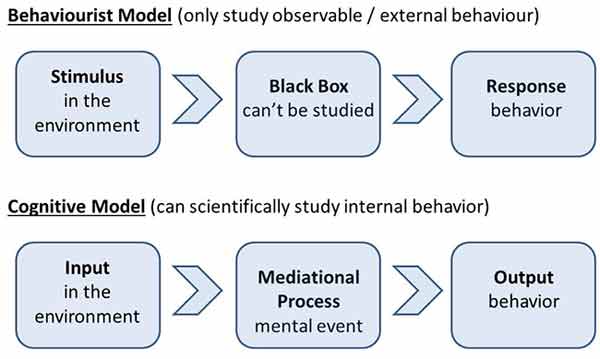 Bandura described specific steps in the process of modeling that must be followed if learning is to be successful: attention, retention, reproduction, and motivation. First, you must be focused on what the model is doing—you have to pay attention. Next, you must be able to retain, or remember, what you observed; this is retention. Then, you must be able to perform the behavior that you observed and committed to memory; this is reproduction. Finally, you must have motivation. You need to want to copy the behavior, and whether or not you are motivated depends on what happened to the model. If you saw that the model was reinforced for her behavior, you will be more motivated to copy her. This is known as vicarious reinforcement. On the other hand, if you observed the model being punished, you would be less motivated to copy her. This is called vicarious punishment. For example, imagine that four-year-old Allison watched her older sister Kaitlyn playing in their mother’s makeup, and then saw Kaitlyn get a time out when their mother came in.
Bandura described specific steps in the process of modeling that must be followed if learning is to be successful: attention, retention, reproduction, and motivation. First, you must be focused on what the model is doing—you have to pay attention. Next, you must be able to retain, or remember, what you observed; this is retention. Then, you must be able to perform the behavior that you observed and committed to memory; this is reproduction. Finally, you must have motivation. You need to want to copy the behavior, and whether or not you are motivated depends on what happened to the model. If you saw that the model was reinforced for her behavior, you will be more motivated to copy her. This is known as vicarious reinforcement. On the other hand, if you observed the model being punished, you would be less motivated to copy her. This is called vicarious punishment. For example, imagine that four-year-old Allison watched her older sister Kaitlyn playing in their mother’s makeup, and then saw Kaitlyn get a time out when their mother came in.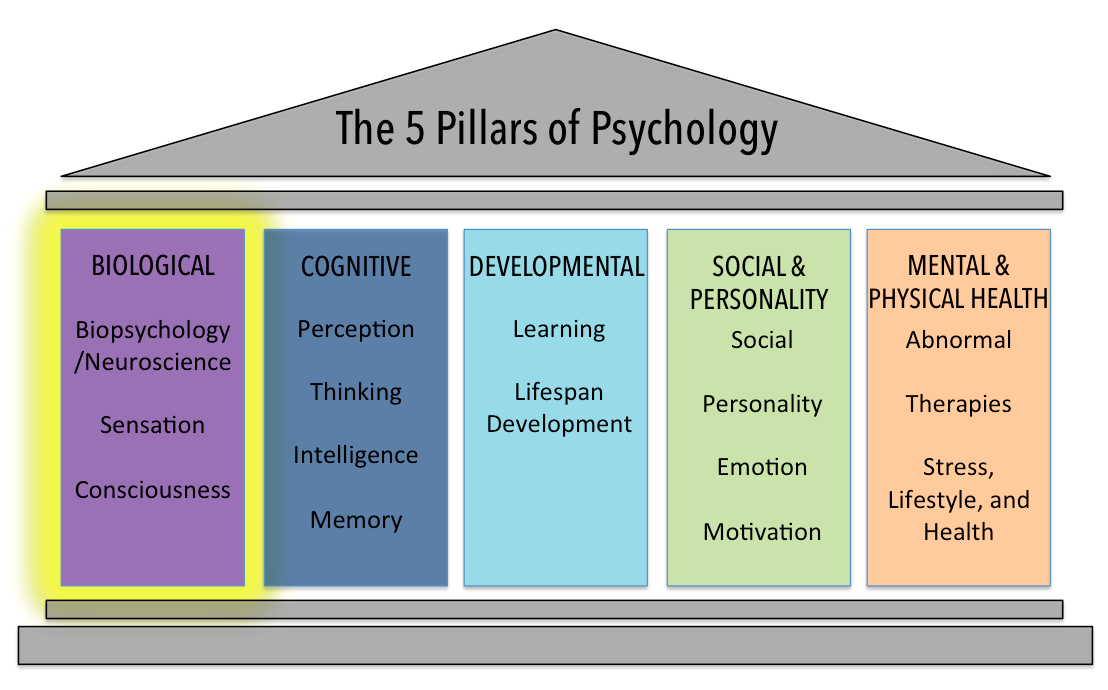 After their mother left the room, Allison was tempted to play in the make-up, but she did not want to get a time-out from her mother. What do you think she did? Once you actually demonstrate the new behavior, the reinforcement you receive plays a part in whether or not you will repeat the behavior.
After their mother left the room, Allison was tempted to play in the make-up, but she did not want to get a time-out from her mother. What do you think she did? Once you actually demonstrate the new behavior, the reinforcement you receive plays a part in whether or not you will repeat the behavior.
Bandura researched modeling behavior, particularly children’s modeling of adults’ aggressive and violent behaviors (Bandura, Ross, & Ross, 1961). He conducted an experiment with a five-foot inflatable doll that he called a Bobo doll. In the experiment, children’s aggressive behavior was influenced by whether the teacher was punished for her behavior. In one scenario, a teacher acted aggressively with the doll, hitting, throwing, and even punching the doll, while a child watched. There were two types of responses by the children to the teacher’s behavior. When the teacher was punished for her bad behavior, the children decreased their tendency to act as she had. When the teacher was praised or ignored (and not punished for her behavior), the children imitated what she did, and even what she said. They punched, kicked, and yelled at the doll.
They punched, kicked, and yelled at the doll.
What are the implications of this study? Bandura concluded that we watch and learn, and that this learning can have both prosocial and antisocial effects. Prosocial (positive) models can be used to encourage socially acceptable behavior. Parents in particular should take note of this finding. If you want your children to read, then read to them. Let them see you reading. Keep books in your home. Talk about your favorite books. If you want your children to be healthy, then let them see you eat right and exercise, and spend time engaging in physical fitness activities together. The same holds true for qualities like kindness, courtesy, and honesty. The main idea is that children observe and learn from their parents, even their parents’ morals, so be consistent and toss out the old adage “Do as I say, not as I do,” because children tend to copy what you do instead of what you say.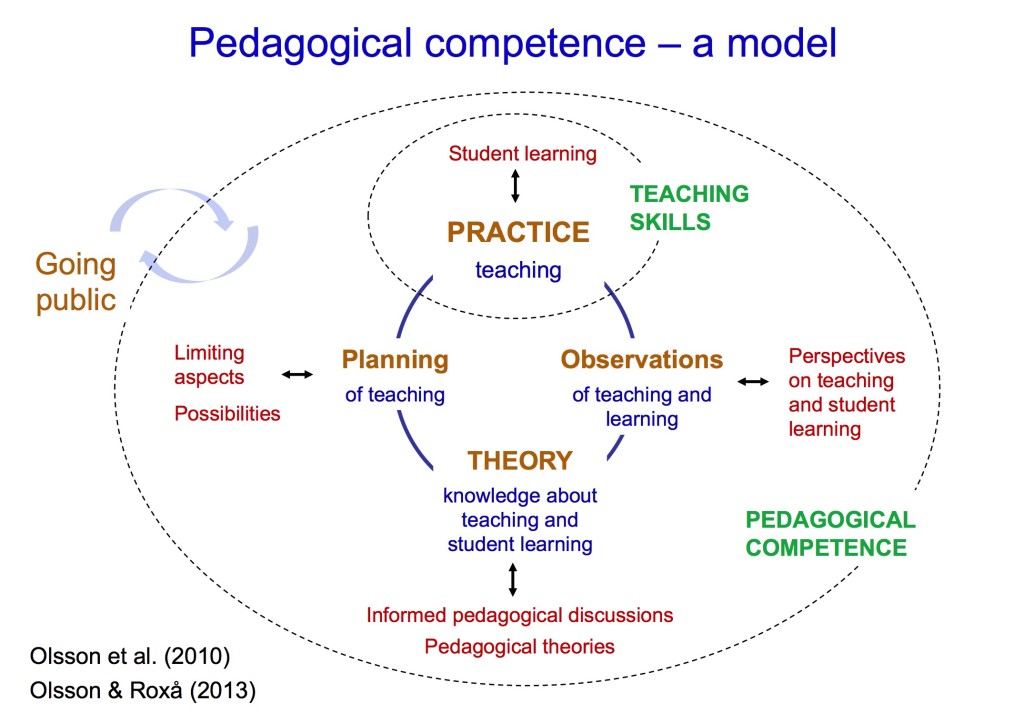 Besides parents, many public figures, such as Martin Luther King, Jr. and Mahatma Gandhi, are viewed as prosocial models who are able to inspire global social change. Can you think of someone who has been a prosocial model in your life?
Besides parents, many public figures, such as Martin Luther King, Jr. and Mahatma Gandhi, are viewed as prosocial models who are able to inspire global social change. Can you think of someone who has been a prosocial model in your life?
The antisocial effects of observational learning are also worth mentioning. As you saw from the example of Claire at the beginning of this section, her daughter viewed Claire’s aggressive behavior and copied it. Research suggests that this may help to explain why abused children often grow up to be abusers themselves (Murrell, Christoff, & Henning, 2007). In fact, about 30% of abused children become abusive parents (U.S. Department of Health & Human Services, 2013). We tend to do what we know. Abused children, who grow up witnessing their parents deal with anger and frustration through violent and aggressive acts, often learn to behave in that manner themselves. Sadly, it’s a vicious cycle that’s difficult to break.
Some studies suggest that violent television shows, movies, and video games may also have antisocial effects (figure below) although further research needs to be done to understand the correlational and causational aspects of media violence and behavior.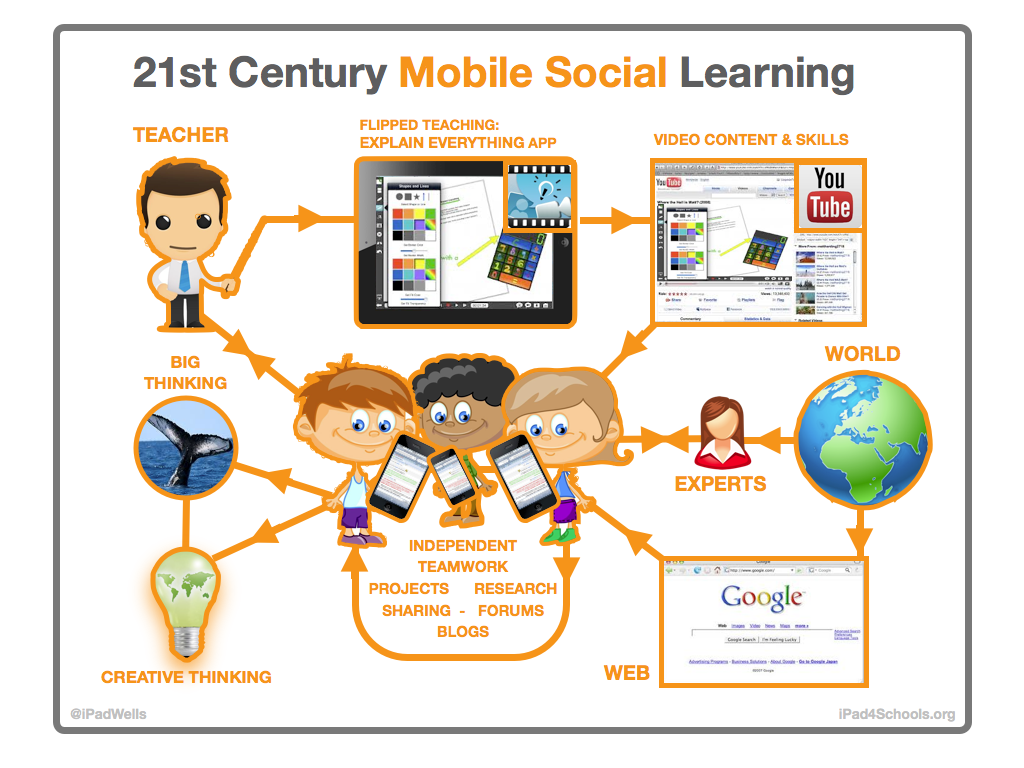 Some studies have found a link between viewing violence and aggression seen in children (Anderson & Gentile, 2008; Kirsch, 2010; Miller, Grabell, Thomas, Bermann, & Graham-Bermann, 2012). These findings may not be surprising, given that a child graduating from high school has been exposed to around 200,000 violent acts including murder, robbery, torture, bombings, beatings, and rape through various forms of media (Huston et al., 1992). Not only might viewing media violence affect aggressive behavior by teaching people to act that way in real life situations, but it has also been suggested that repeated exposure to violent acts also desensitizes people to it. Psychologists are working to understand this dynamic.
Some studies have found a link between viewing violence and aggression seen in children (Anderson & Gentile, 2008; Kirsch, 2010; Miller, Grabell, Thomas, Bermann, & Graham-Bermann, 2012). These findings may not be surprising, given that a child graduating from high school has been exposed to around 200,000 violent acts including murder, robbery, torture, bombings, beatings, and rape through various forms of media (Huston et al., 1992). Not only might viewing media violence affect aggressive behavior by teaching people to act that way in real life situations, but it has also been suggested that repeated exposure to violent acts also desensitizes people to it. Psychologists are working to understand this dynamic.
Can video games make us violent? Psychological researchers study this topic. (credit: “woodleywonderworks”/Flickr)
SUMMARY
According to Bandura, learning can occur by watching others and then modeling what they do or say.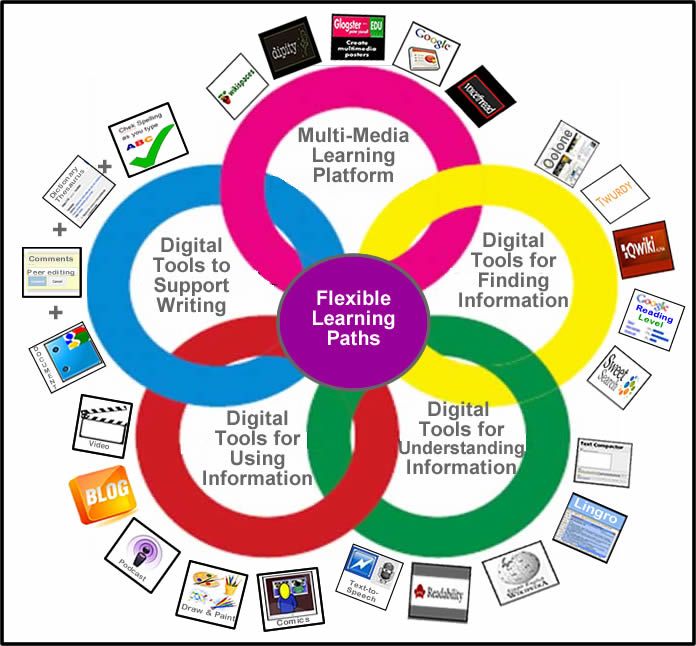 This is known as observational learning. There are specific steps in the process of modeling that must be followed if learning is to be successful. These steps include attention, retention, reproduction, and motivation. Through modeling, Bandura has shown that children learn many things both good and bad simply by watching their parents, siblings, and others.
This is known as observational learning. There are specific steps in the process of modeling that must be followed if learning is to be successful. These steps include attention, retention, reproduction, and motivation. Through modeling, Bandura has shown that children learn many things both good and bad simply by watching their parents, siblings, and others.
References:
Openstax Psychology text by Kathryn Dumper, William Jenkins, Arlene Lacombe, Marilyn Lovett and Marion Perlmutter licensed under CC BY v4.0. https://openstax.org/details/books/psychology
Exercises
Review Questions:
1. The person who performs a behavior that serves as an example is called a ________.
a. teacher
b. model
c. instructor
d. coach
2. In Bandura’s Bobo doll study, when the children who watched the aggressive model were placed in a room with the doll and other toys, they ________.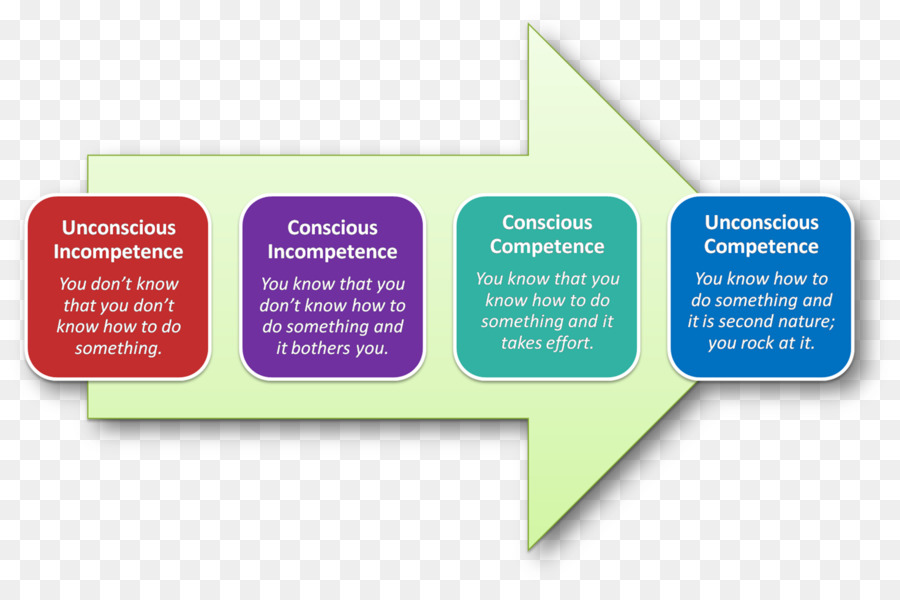
a. ignored the doll
b. played nicely with the doll
c. played with tinker toys
d. kicked and threw the doll
3. Which is the correct order of steps in the modeling process?
a. attention, retention, reproduction, motivation
b. motivation, attention, reproduction, retention
c. attention, motivation, retention, reproduction
d. motivation, attention, retention, reproduction
4. Who proposed observational learning?
a. Ivan Pavlov
b. John Watson
c. Albert Bandura
d. B. F. Skinner
Critical Thinking Questions:
1. What is the effect of prosocial modeling and antisocial modeling?
2. Cara is 17 years old. Cara’s mother and father both drink alcohol every night. They tell Cara that drinking is bad and she shouldn’t do it. Cara goes to a party where beer is being served. What do you think Cara will do? Why?
Personal Application Question:
1. What is something you have learned how to do after watching someone else?
What is something you have learned how to do after watching someone else?
Glossary:
model
observational learning
vicarious punishment
vicarious reinforcement
Answers to Exercises
Review Questions:
1. B
2. D
3. A
4. C
Critical Thinking Questions:
1. Prosocial modeling can prompt others to engage in helpful and healthy behaviors, while antisocial modeling can prompt others to engage in violent, aggressive, and unhealthy behaviors.
2. Cara is more likely to drink at the party because she has observed her parents drinking regularly. Children tend to follow what a parent does rather than what they say.
Glossary:
model: person who performs a behavior that serves as an example (in observational learning)
observational learning: type of learning that occurs by watching others
vicarious punishment: process where the observer sees the model punished, making the observer less likely to imitate the model’s behavior
vicarious reinforcement: process where the observer sees the model rewarded, making the observer more likely to imitate the model’s behavior
Modelling Learning
What is Modelling Learning?
Modelling is the process of learning by copying others' behaviour.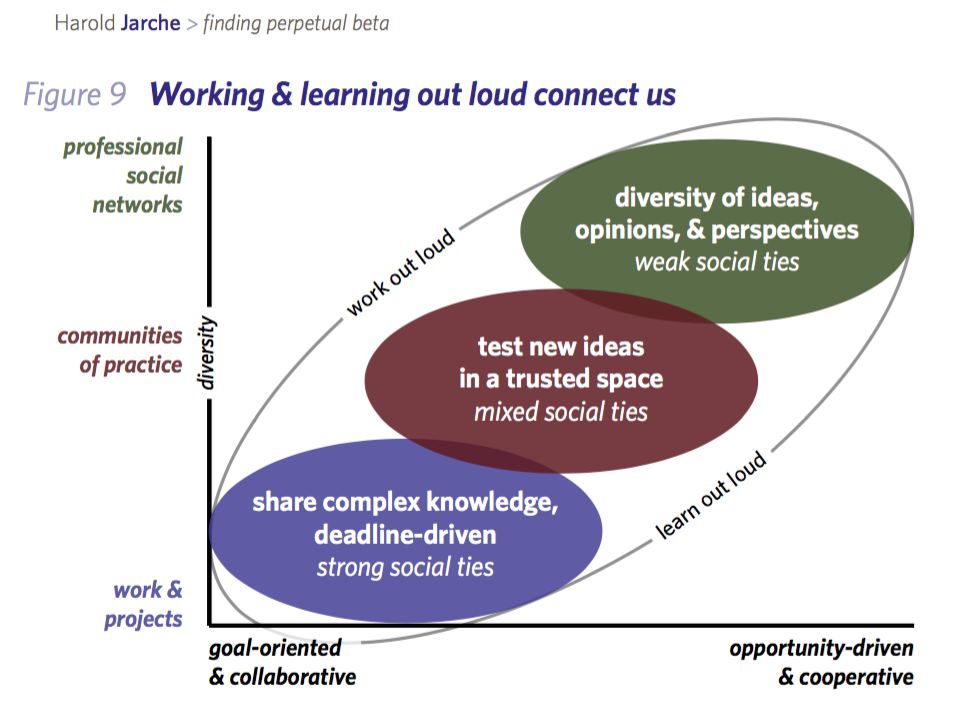 It is also called Observational Learning. Humans model one another naturally – for example, kids use modelling to learn how to tie their shoes or use utensils. Modelling learning involves a particular kind of neuron, known as a mirror neuron. People conducting the imitated behaviour are called the models.
It is also called Observational Learning. Humans model one another naturally – for example, kids use modelling to learn how to tie their shoes or use utensils. Modelling learning involves a particular kind of neuron, known as a mirror neuron. People conducting the imitated behaviour are called the models.
In education, Modelling is used by educators as an instructional strategy to save time for teaching while improving their teaching skills. Each time an instructor explains a concept for a student, the instructor is modelling.
According to Albert Bandura's Social Learning Theory, pure behaviourism cannot explain why the learning process occurs in absence of external reinforcement. Albert Bandura felt that inner mental state or cognitive processes must also play a role in learning efficiency and that the modelling process takes into account much more than imitation. In the case of imitation, a person barely copies what is done by the model.
In the case of imitation, a person barely copies what is done by the model.
What do we mean by Mental Modelling?
At Structural Learning, we encourage the active learning principles of metacognition. This involves children in the model creation of their thought processes. By using our block building methodology, a child can get the inside picture of human learning and how it happens. The pedagogy is predominantly based on the idea of organising our thoughts. This process of modelling allows a child to see their thoughts and at the same time have an opportunity to modify them. This experience provides opportunities for the positive reinforcement of key learning behaviours. Allowing time for teaching methodologies like this gives children room to play with their new ideas. The social behaviours that come through these activities enable children to articulate their thinking to one another.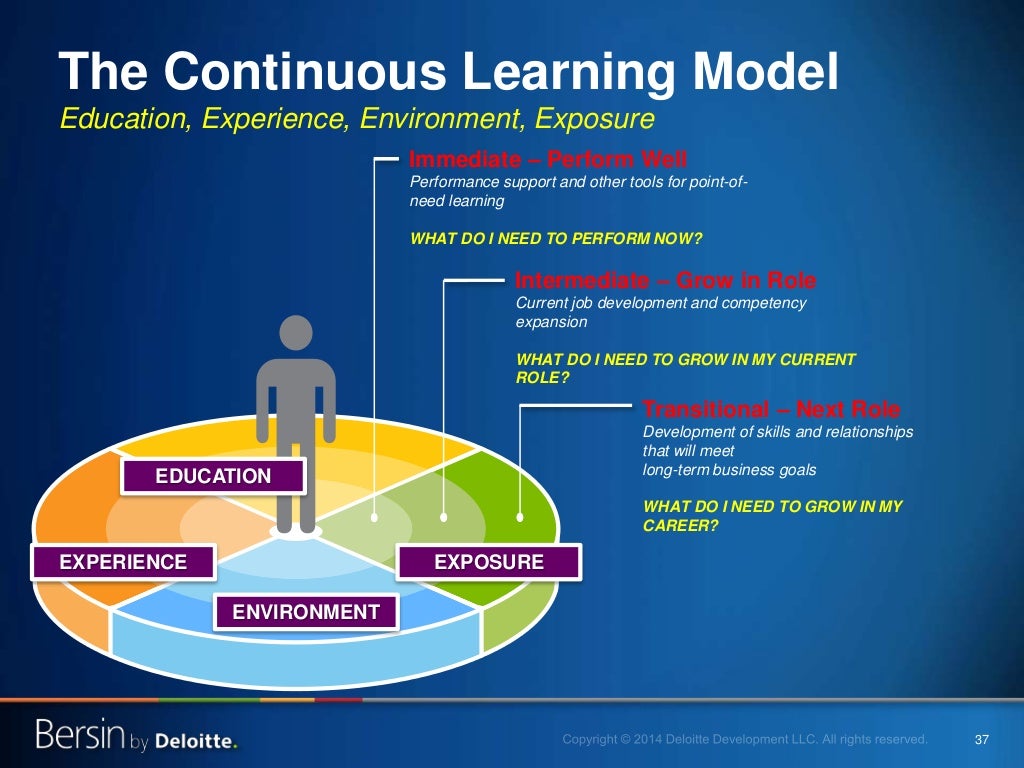 This acts as a launchpad for better writing as pupils are given time to rehearse what they are going to write.
This acts as a launchpad for better writing as pupils are given time to rehearse what they are going to write.
Using modelling to build essay plans
What are the steps of Modelling Learning?
According to Albert Bandura - Social Learning Theory, learning efficiency may occur while watching others' social behaviours and then modelling what others say or do. Bandura explained particular steps in the process of modelling that must be followed to make learning successful:
- Firstly, one must focus on what the model is doing— this is called attention.
- Secondly, they must remember, or retain, what they observed; this is called retention.
- Thirdly, they must perform the behaviour that they observed and saved in their memory; this step is called reproduction.
- Lastly, they need motivation. They must be willing to copy the behaviour, and whether or not they are motivated to copy depends upon what happened to the model.
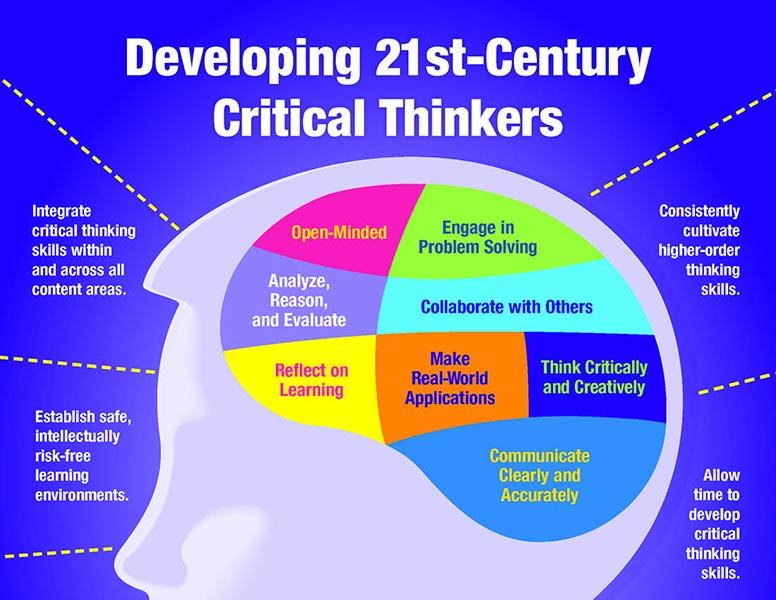 If the model was punished, one would be less motivated to copy the model. This is known as vicarious punishment. On the other hand, if the model was reinforced for the behaviour, one would be more motivated to copy her. This is called vicarious reinforcement.
If the model was punished, one would be less motivated to copy the model. This is known as vicarious punishment. On the other hand, if the model was reinforced for the behaviour, one would be more motivated to copy her. This is called vicarious reinforcement.
Creating models of sentences using our blocks
What are different types of Models?
Bandura specified 3 types of models:
Live: A live model indicates a behaviour in person. For example, Catherine stood up on her surfboard so that Stacey could see how she did it.
Verbal: A verbal model does not involve any act of performing the behaviour, but rather describes or explains the behaviour. It is the best strategy in case of insufficient time. For example, A football coach tells the junior players to use the side of the foot to kick the ball not the toe.
Symbolic: A symbolic instructional model can be real people or fictional characters demonstrating behaviours in stories, movies, video games, television shows, Internet sources etc.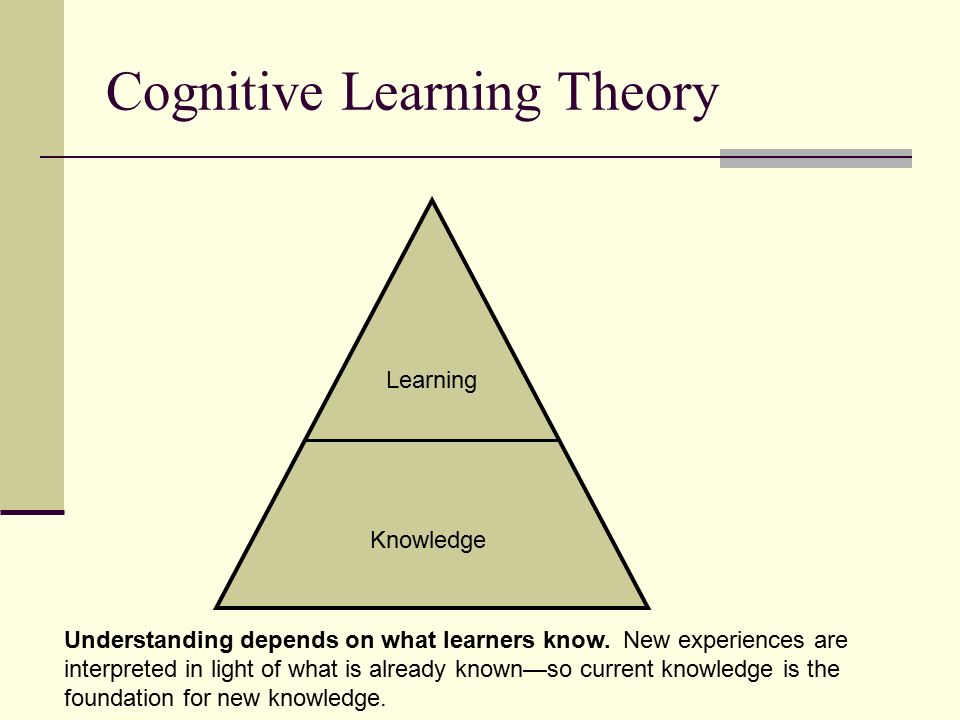 For example, Video-modelling is frequently used to help children with neurodevelopmental disorders learn new skills. It is also used to help children with autism spectrum disorder reduce challenging behaviour like tantrums and aggression.
For example, Video-modelling is frequently used to help children with neurodevelopmental disorders learn new skills. It is also used to help children with autism spectrum disorder reduce challenging behaviour like tantrums and aggression.
Creating models using symbols
How can you motivate children to demonstrate acceptable behaviour?
Bandura researched children's modelling behaviour, specifically adults' modelling process of violent and aggressive behaviours. He used a 5- foot inflatable doll for the experiment. In his experiment, teachers' punishment for aggressive behaviour had an impact on children’s aggressive behaviour. In one scenario, an educator demonstrated aggressive behaviour for the doll, throwing, hitting, and even punching the doll, in presence of a child. In response to the teacher's behaviour, two types of children's responses were observed. When the instructor was ignored or praised (and not penalized for her behaviour), the students imitated what the instructor did, and even they repeated her words. They yelled, kicked and punched the doll. On the other hand, when the instructor was penalized for bad behaviour, the students decreased their tendency to act as instructors.
They yelled, kicked and punched the doll. On the other hand, when the instructor was penalized for bad behaviour, the students decreased their tendency to act as instructors.
After this experiment, Albert Bandura concluded that individuals see and learn, and their learning efficiency can have both antisocial and prosocial effects. Positive or prosocial models can be used to stimulate socially acceptable behaviour. Especially parents must take note of this outcome. If they want their kids to read, they must read to them. Keep a collection of books at home. Let children see them reading. Talk about any new or their favourite books. Similarly, if parents want their children to be healthy, then the children must see their parents exercise and eat healthy and spend time in physical fitness activities. Parents can use the same strategy to develop qualities like honesty, courtesy and kindness in their children. The main concept is that kids see and learn from their parents, even their parents’ values. Therefore, parents must remain consistent. Kids tend to copy what their parents do instead of what their parents say. Likewise, parents, there are many public figures, such as Mahatma Gandhi and Martin Luther King, Jr. who are considered as prosocial models as they could provoke global social change.
Therefore, parents must remain consistent. Kids tend to copy what their parents do instead of what their parents say. Likewise, parents, there are many public figures, such as Mahatma Gandhi and Martin Luther King, Jr. who are considered as prosocial models as they could provoke global social change.
The learning skills framework
What are the antisocial effects of modelling learning?
It is important to discuss antisocial modelling or observational learning. Research suggests that children tend to copy their parents' aggressive behaviour. This is the reason most abused children grow up to become abusers themselves. Research shows that almost 30% of abused children grow up to become abusive parents in future. People are more likely to follow what they know. When children see their parents dealing with frustration and anger through aggressive and violent acts, they also learn to behave in that way.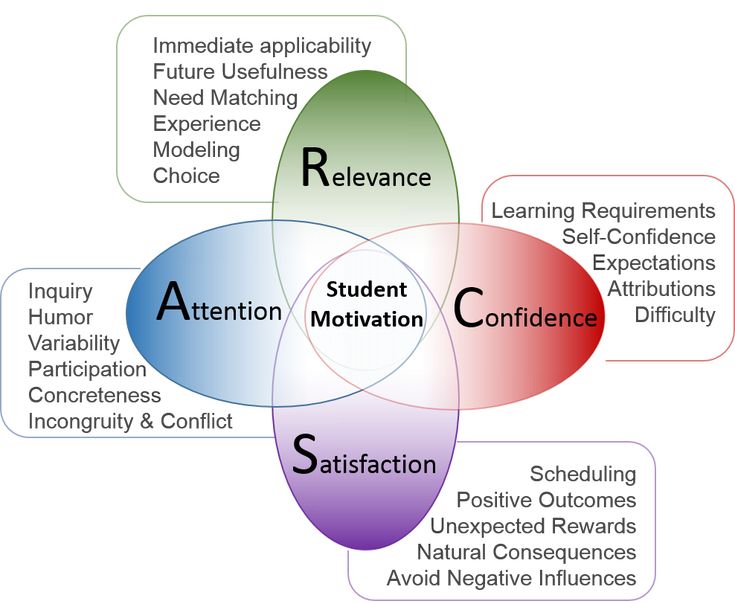 Unfortunately, it is difficult to break this vicious cycle.
Unfortunately, it is difficult to break this vicious cycle.
Research suggests that violent video games, movies, and television shows may sometimes act as mechanisms of learning 21st century skills but these may also give rise to antisocial modelling behaviour. Not only might seeing media violence initiate aggressive behavior but also repeated exposure to violent acts also makes people less sensitive to it.
What increases the likelihood that a behaviour will be imitated?
According to Albert Bandura - Social Learning Theory, the following are the factors that increase the likelihood that a behaviour will be imitated.
- People who are rewarded for their behaviour;
- People we feel as nurturing and warm;
- People who have similar interests, or share the same age and sex;
- People of higher social status or those we admire;
- People at an authoritative position;
- When the situation is unfamiliar, ambiguous or confusing;
- When we are lacking in confidence in our abilities or knowledge;
- When we were rewarded for imitating the same behaviour in the past
According to Albert Bandura - Social Learning Theory - learning may take place by watching others and then modelling what others say or do. This is called observational learning. Some specific steps to make the modelling process successful include attention, retention, reproduction, and motivation. Bandura used the process of modelling to show that children learn many things both bad and good simply by social experiences and by seeing their family members and others.
This is called observational learning. Some specific steps to make the modelling process successful include attention, retention, reproduction, and motivation. Bandura used the process of modelling to show that children learn many things both bad and good simply by social experiences and by seeing their family members and others.
Structural Equation Modeling for Social Science Researchers
Structural Equation Modeling is one of the most sought after methods of analysis in the social sciences. This methodology allows you to analyze the quality of tests and questionnaires, as well as to find out how the measured characteristics of respondents are related to each other and other external variables. However, this analysis methodology is relatively easy to carry out the analysis and interpret the results. The goal of this advanced training program is to introduce students to the basic sections of structural equation modeling.
Students in this program will learn to use, interpret, publish, and select or develop their own structural models to provide evidence-based answers to complex social science research questions.
Apply nowAsk a question
Cost and conditions
Modern quantitative research in the social sciences rarely uses a methodology other than structural equation modeling. This methodological apparatus is user-friendly, easy to interpret, and extremely flexible in terms of the research questions it can answer. Today, it is widely used to analyze tests and questionnaires and to elucidate relationships between unobserved and observed variables in both cross-sectional and longitudinal studies.
Modeling by structural equations fits into 2 groups of methods - path analysis and factor analysis. While path analysis allows you to find out the complex relationships between observed variables, factor analysis allows you to calculate the values of latent variables from the observed ones and find out their relationships with each other.
The authors will get acquainted with the basics of statistics necessary to understand this topic, learn the rules for constructing a model, the necessary conditions for its calculation, methods for assessing the fit of a model with data, and the subtleties of interpreting the calculated models.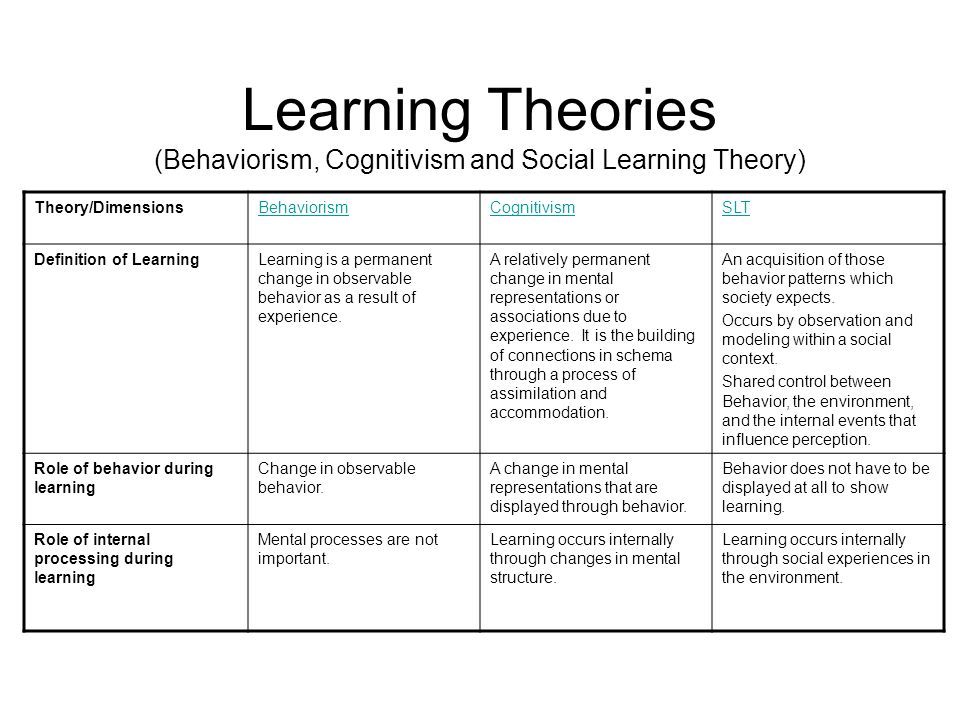
For whom
The program will be useful for such students as
-
Specialists in the field of measurements in psychology and sociology
Employees of departments of universities involved in the development of psychological and sociological questionnaires, implying the ranking of respondents by test score
in the field of measurements in psychology and sociology -
Specialists in the field of HR measurements
Employees who want to develop innovative competitive tools of HR measurements
Researchers who want to study evidence-based how (including through which variables) different constructs and traits are related to each other
Learning program
-
Introduction to statistics in Randmental Fundamentals
- What is the programming language of programming, what is it with it are eating?
- What can R do and how can we explain to it what exactly we want from it?
- How can I load data into it?
- How to build a basic visualization?
- What is correlation and how to calculate it in R?
-
Basics of Regression in R Practical Basics
- What is Linear Regression?
- How to calculate linear regression in R?
- What is logistic regression?
- How to calculate logistic regression in R?
- What other regressions are there?
-
Fundamentals of factor analysis Factor analysis
- How can you find out how many traits the questionnaire measures?
- How to find out when there are no theoretical ideas about the structure of the questionnaire?
- How to confirm your theoretical ideas about the structure of the questionnaire?
- How to modify your theoretical ideas about the structure of the questionnaire based on data?
- How to prove that the questionnaire does not discriminate against anyone?
-
Variable Relationship Analysis Factor Analysis and Path Analysis
- How is the target unobservable trait related to another unobservable trait?
- How is the target non-observable trait related to the outer observable variable?
- What if, according to the theory, one trait is related to another (or observable variable) through some other variables?
- How to answer difficult questions about the relationship of observed variables?
Certificate of completion
Upon successful completion of the training, students are provided with a certificate of advanced training of the standard established by the National Research University Higher School of Economics.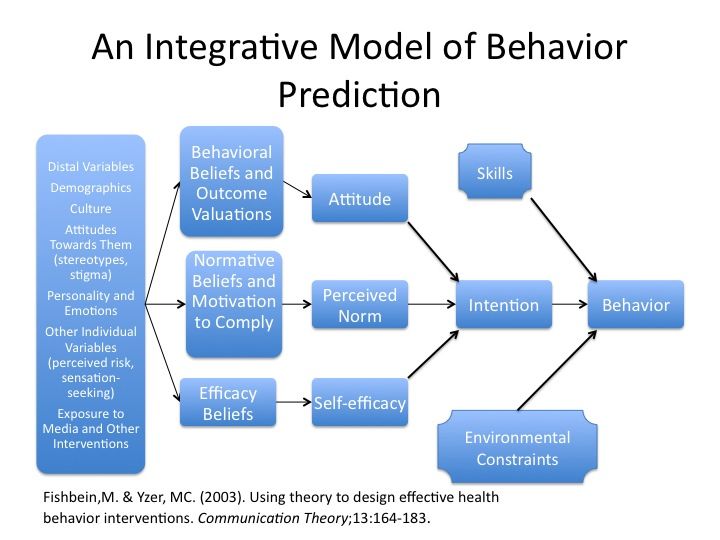
Submit a request to issue
Training results
As a result of training, students learn about the following aspects of modeling by structural equations
-
The conceptual understanding of the region
will be able to understand and solve the problems arising from the modeling by structural equations
-
R
Students will become familiar with the advanced features and syntax of the R programming language, a user-friendly, powerful tool for statistical analysis of results
-
Fundamentals of Statistics
Students will learn the basics of regression analysis, calculating and interpreting regression models, and evaluating model quality through regression analysis assumptions
-
Modeling with structural equations
Students will learn the basics of technical questions and research equations to which it allows you to answer, get acquainted with the specifics of their calculation, the process of proving the quality of the model, as well as the intricacies of interpretation and the traditions of reporting results in publication
-
Community
Students will have access to a group of alumni of all programs of the psychometric training cycle, will be able to speak the same language with them and request help or advice
Training format
-
Total duration in hours 9002 9003
-
Admission conditions
preliminary mastering of the advanced training program “Classical Testing Theory” or good knowledge of its content.

-
Learning format
Online
-
The composition of the group
The standard number 10 people
-
Language Language
Russian
-
EXECRICTIONS
Interactive lectures
-
Calip project
-
Simultaneous lectures
Distance learning via Zoom
-
Synchronous seminars
Remote training on ZOOM
-
Two academic hours of individual consultation with a teacher at the choice of
Remote training on ZOOM
-
Protection of their projects
Remote training on ZOOM
-
To pass this advanced training program, you must either first complete the program "Classical Testing Theory: Analysis of Test Items and Assessment Results", or be familiar with its content.
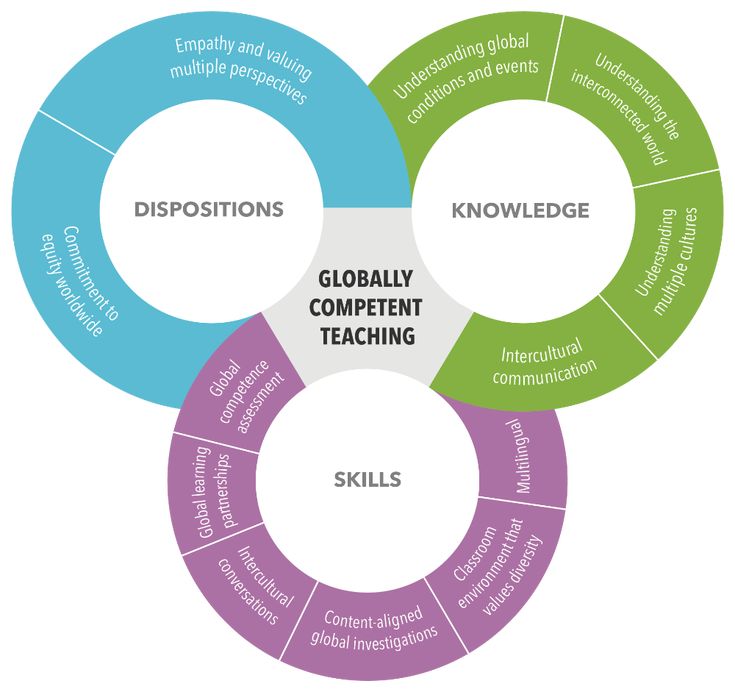
Contacts
Social Learning Theory (Bandura) Talent Management
Bandura's social learning theory suggests that people learn from each other through observation, imitation and simulation. The theory is often referred to as a bridge between the theories of behaviorism and cognitive learning as it covers the functions of attention, memory and motivation.
AUTHORS
Albert Bandura (1925 - present)
KEY IDEAS
People learn by observing the behavior, attitudes and results of others [1]. “Most human behavior is learned through simulation: observing others forms an idea of how this new behavior is performed, and subsequently this coded information serves as a guide for actions” (Bandura). Social learning theory explains human behavior as something that emerges from a continuous interplay of cognitive, behavioral, and environmental factors.
NECESSARY CONDITIONS FOR EFFECTIVE MODELING
Attention - Various factors increase or decrease the amount of attention.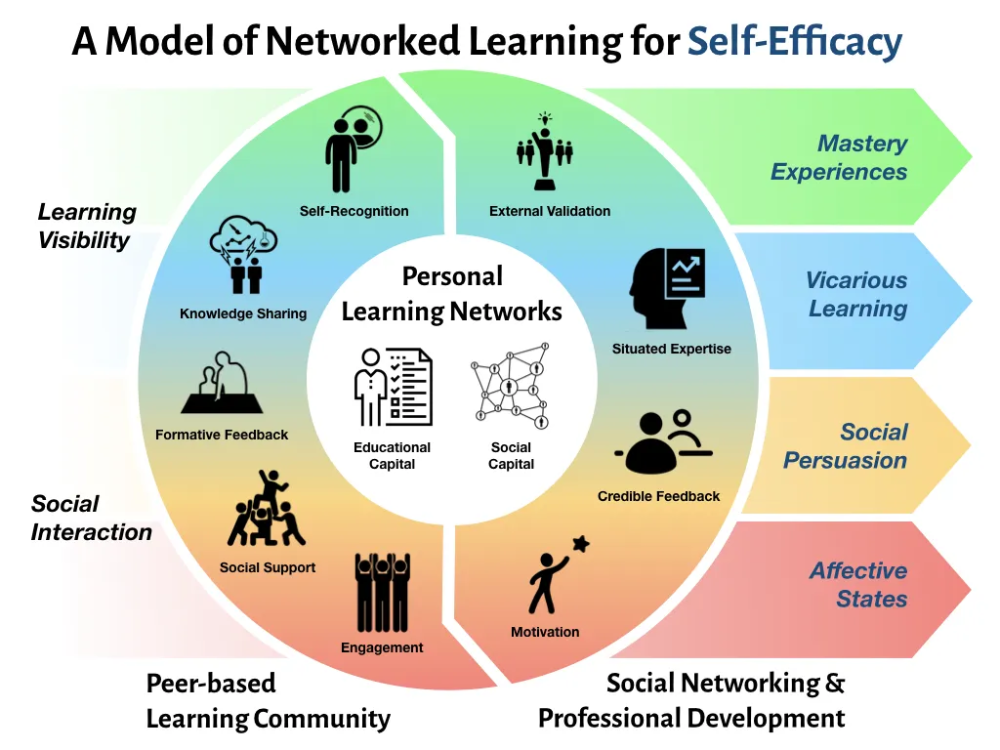 Includes clarity, affective valency, prevalence, complexity, functional value. Attention is affected by some characteristics (eg, sensory ability, level of arousal, perceptual set, past reinforcement).
Includes clarity, affective valency, prevalence, complexity, functional value. Attention is affected by some characteristics (eg, sensory ability, level of arousal, perceptual set, past reinforcement).
Memory - remembering what you paid attention to. Includes symbolic coding, mental imagery, cognitive organization, symbolic repetition, motor repetition.
Playback - Image playback. Includes physical capabilities and self-observation of reproduction.
Motivation - is there a good reason to imitate. Includes motives such as past (such as traditional behaviorism), promised (imaginary stimuli), and vicarious (observing and remembering a reinforced model).
MUTUAL DETERMINISM
Bandura believed in "reciprocal determinism", i.e. that human behavior and environmental factors mutually influence each other, while behaviorism basically claims that human behavior is caused by the environment [2].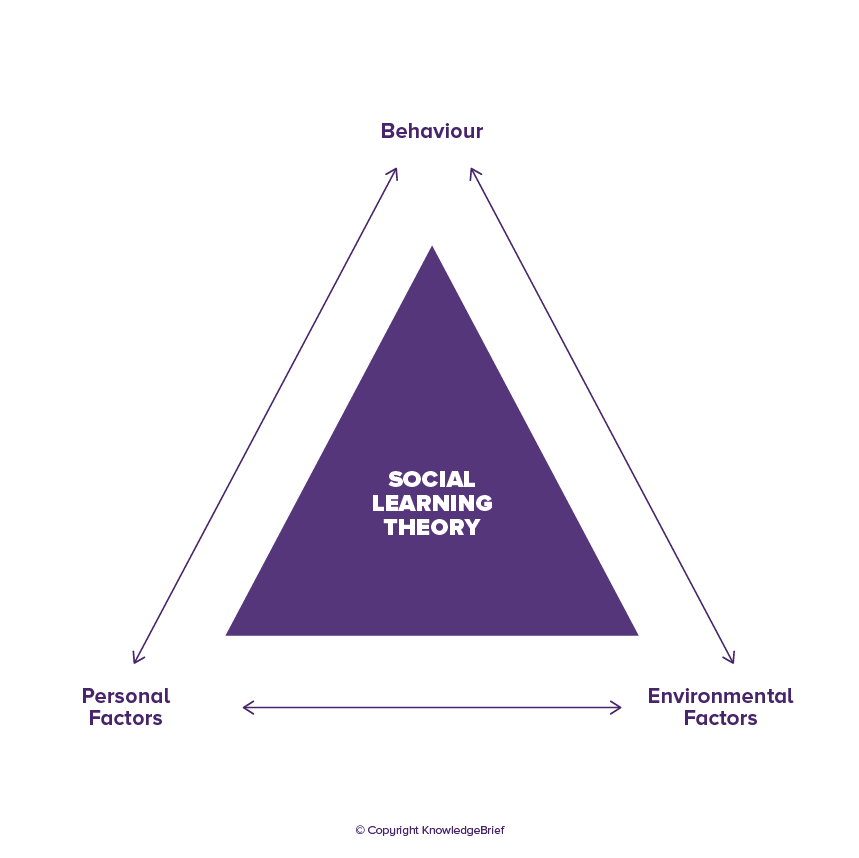 Bandura, who studied adolescent aggressiveness, considered this view too simplistic, so he suggested that behavior also affects the environment [3]. Bandura later viewed personality as the interaction of three components: environment, behavior, and psychological processes (the ability to recreate images in the mind and language).
Bandura, who studied adolescent aggressiveness, considered this view too simplistic, so he suggested that behavior also affects the environment [3]. Bandura later viewed personality as the interaction of three components: environment, behavior, and psychological processes (the ability to recreate images in the mind and language).
Social learning theory is sometimes referred to as a bridge between behavioral and cognitive learning theories because it encompasses the functions of attention, memory, and motivation. The theory is related to L. S. Vygotsky's theory of social development and Jean Lave's situational learning theory, which also emphasizes the importance of social learning.
ADDITIONAL RESOURCES AND REFERENCES
- Bandura, A. (1977). Social Learning Theory. New York: General Learning Press.
